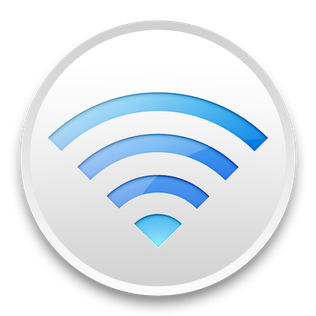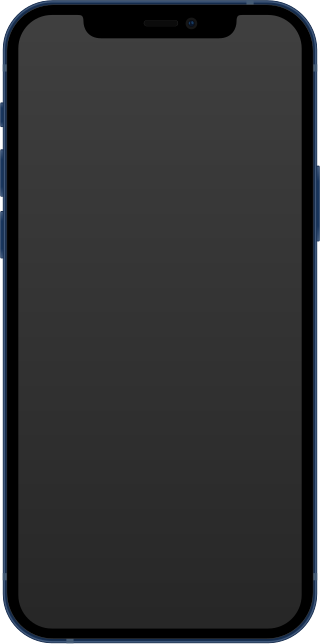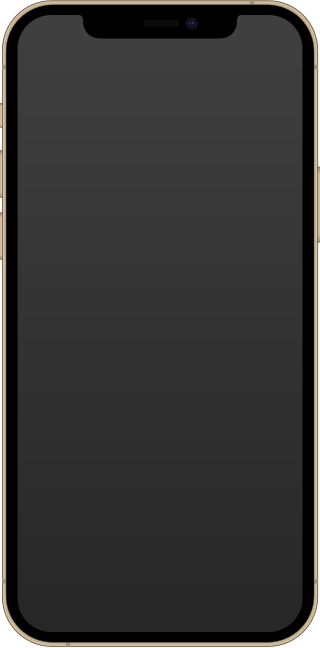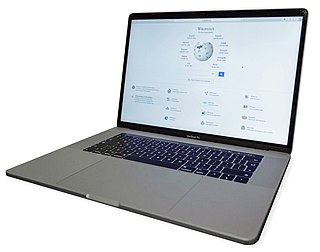
AirPort is a discontinued line of wireless routers and network cards developed by Apple Inc. using Wi-Fi protocols. In Japan, the line of products was marketed under the brand AirMac due to previous registration by I-O Data.

Torx is a trademark for a type of screw drive characterized by a 6-point star-shaped pattern, developed in 1967 by Camcar Textron. A popular generic name for the drive is star, as in star screwdriver or star bits. The official generic name, standardized by the International Organization for Standardization as ISO 10664, is hexalobular internal. This is sometimes abbreviated in databases and catalogs as 6lobe. Torx Plus,Torx Paralobe and Torx ttap are improved head profiles.

The PowerBook G4 is a series of notebook computers manufactured, marketed, and sold by Apple Computer between 2001 and 2006 as part of its PowerBook line of notebooks. The PowerBook G4 runs on the RISC-based PowerPC G4 processor, designed by the AIM (Apple/IBM/Motorola) development alliance and initially produced by Motorola. It was built later by Freescale, after Motorola spun off its semiconductor business under that name in 2004. The PowerBook G4 has had two different designs: one with a titanium body with a translucent black keyboard and a 15-inch screen; and another in an aluminum body with an aluminum-colored keyboard, in 12-inch, 15-inch, and 17-inch sizes.

The MacBook Pro is a line of Mac laptops made by Apple Inc. Introduced in January 2006, it is the higher-end lineup in the MacBook family, sitting above the consumer-focused MacBook Air. It is currently sold with 14-inch and 16-inch screens, all using Apple silicon M-series chips.

MagSafe is a series of proprietary magnetically attached power connectors developed by Apple Inc. for Mac laptops. MagSafe was introduced on 10 January 2006, in conjunction with the MacBook Pro, the first Intel-based Mac laptop, at the Macworld Expo. A MagSafe connector is held in place magnetically so that if it is tugged, it will be pulled out of the port without damaging the connector or the port, and without pulling the computer off its surface. A thinner and wider version, called MagSafe 2, was introduced in 2012. It was discontinued across Apple's product lines between 2016 and 2019 and replaced with USB-C. MagSafe returned to Mac laptops with the introduction of updated MacBook Pro models with MagSafe 3 in 2021.

The MacBook Air is a line of laptop computers developed and manufactured by Apple since 2008. It features a thin, light structure in a machined aluminum case and currently either a 13-inch or 15-inch screen. The Macbook Air's lower prices relative to the larger, higher performance MacBook Pro have made it Apple's entry-level notebook since the discontinuation of the original MacBook line in 2011.
iFixit is an American e-commerce and how-to website that sells repair parts and publishes free wiki-like online repair guides for consumer electronics and gadgets. The company also performs product tear-downs of consumer devices. It is a private company in San Luis Obispo, California founded in 2003, spurred by Kyle Wiens not being able to locate an Apple iBook G3 repair manual while the company's founders were attending Cal Poly San Luis Obispo.

Apple silicon refers to a series of system on a chip (SoC) and system in a package (SiP) processors designed by Apple Inc., mainly using the ARM architecture. They are the basis of Mac, iPhone, iPad, Apple TV, Apple Watch, AirPods, AirTag, HomePod, and Apple Vision Pro devices.

The 12-inch MacBook is a discontinued Mac laptop made by Apple Inc., which sat between the MacBook Air and MacBook Pro in Apple's laptop lineup.

The Huawei P9 is a Chinese high-end Android smartphone produced by Huawei, released in 2016. It is the successor to the Huawei P8 and maintains almost the same design but has a dual camera setup in the back co-engineered with Leica along with a fingerprint sensor. The Huawei P9 has a 5.2-inch Full HD IPS-NEO LCD display and runs on Android 6.0 Marshmallow OS.

The iPhone XS and iPhone XS Max are smartphones designed, developed and marketed by Apple Inc. They are the twelfth-generation flagships of the iPhone, succeeding the iPhone X. Apple CEO Tim Cook announced the devices alongside a lower-end model, the iPhone XR, on September 12, 2018, at the Steve Jobs Theater at Apple Park. Pre-orders began on September 14, 2018, and the devices went on sale on September 21.

The iPhone 12 and iPhone 12 Mini are smartphones designed, developed, and marketed by Apple Inc. They are the fourteenth-generation iPhones, succeeding the iPhone 11. They were unveiled at a virtually held Apple Special Event at Apple Park in Cupertino, California, on October 13, 2020, alongside the "premium flagship" iPhone 12 Pro and iPhone 12 Pro Max and HomePod Mini. Pre-orders for the iPhone 12 started on October 16, 2020, and the phone was released in most countries on October 23, 2020 alongside the iPhone 12 Pro and fourth-generation iPad Air. Pre-orders for the iPhone 12 Mini began on November 6, 2020, and the phone was released on November 13, 2020, alongside the iPhone 12 Pro Max.

The iPhone 12 Pro and iPhone 12 Pro Max are smartphones designed, developed, and marketed by Apple Inc. They are the flagship smartphones in the fourteenth generation of the iPhone, succeeding the iPhone 11 Pro and iPhone 11 Pro Max, respectively. They were unveiled alongside the iPhone 12 and iPhone 12 Mini at an Apple Special Event at Apple Park in Cupertino, California on October 13, 2020, with the iPhone 12 Pro being released on October 23, 2020, and the iPhone 12 Pro Max on November 13, 2020. They were discontinued on September 14, 2021, along with the iPhone XR, following the announcement of the iPhone 13 and iPhone 13 Pro.
The MacBook Air is a line of Mac laptops made by Apple Inc. In 2020, Apple stopped using Intel processors in the Air and switched to using their own Apple silicon M-series chips. In the current product line, the MacBook Air is Apple's entry-level laptop, situated below the performance range MacBook Pro, and is currently sold with 13-inch and 15-inch screens.

The Intel-based MacBook Air is a discontinued line of notebook computers developed and manufactured by Apple Inc. from 2008 to 2020. The Air was originally positioned above the previous MacBook line as a premium ultraportable. Since then, the original MacBook's discontinuation in 2011, and lowered prices on subsequent iterations, made the Air Apple's entry-level notebook.

The iPhone 13 Pro and iPhone 13 Pro Max were smartphones designed, developed and marketed by Apple Inc. They were the flagship smartphones in the fifteenth generation of the iPhone, succeeding the iPhone 12 Pro and iPhone 12 Pro Max respectively. The devices were unveiled alongside the iPhone 13 and iPhone 13 Mini at an Apple Special Event at Apple Park in Cupertino, California on September 14, 2021, and became available ten days later, on September 24. They were discontinued on September 7, 2022, as well as the iPhone 11 and iPhone 12 mini, following the announcement of the iPhone 14 and iPhone 14 Pro.

The MacBook Pro with Apple silicon is a line of Mac notebook computers first introduced in November 2020 by Apple Inc. It is the higher-end model of the MacBook family, sitting above the consumer-focused MacBook Air, and is currently sold with 14-inch and 16-inch screens. All models use Apple-designed M-series systems on a chip.

The Intel-based MacBook Pro is a discontinued line of Macintosh notebook computers sold by Apple Inc. from 2006 to 2021. It was the higher-end model of the MacBook family, sitting above the consumer-focused MacBook Air, and was sold with 13-inch to 17-inch screens.

The Mac Studio is a small-form-factor workstation made by Apple Inc. It is one of four desktop computers in the Mac lineup, sitting above the consumer-range Mac Mini and iMac, and positioned below the Mac Pro. It is configurable with either the M2 Max or M2 Ultra system on a chip.


















